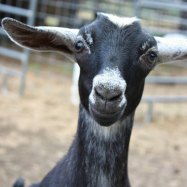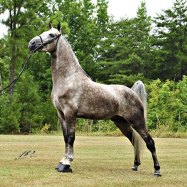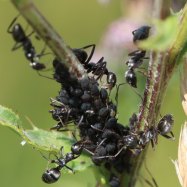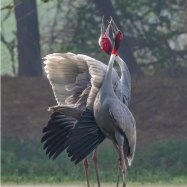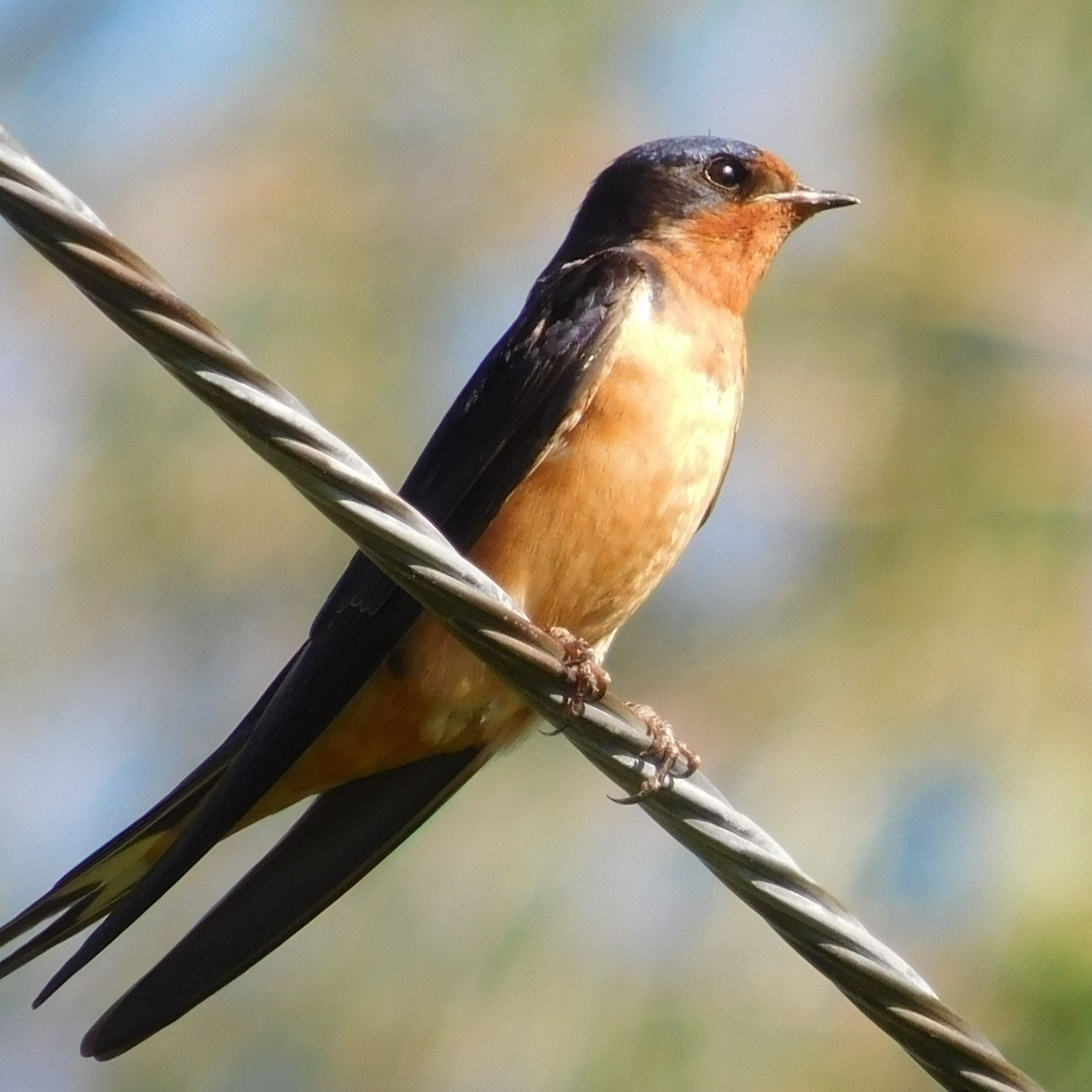
Barn Swallow
5.9 - 7.5 inches
The Barn Swallow, found in North America, Europe, Asia, Africa, and Australia, is a slender bird with long, pointed wings and a distinctive forked tail. Belonging to the Hirundinidae family, it is known for its graceful aerial acrobatics and beautiful chirping songs. Keep an eye out for these charming birds as they soar through the skies with their impressive flight skills. #BarnSwallow #Hirundinidae #BirdWatching #Nature
Animal Details Summary:
Common Name: Barn Swallow
Kingdom: Animalia
Habitat: Open country near water, including agricultural areas, meadows, and marshes
The Graceful Barn Swallow: A Tiny Bird with Mighty Flying Abilities
The barn swallow (Hirundo rustica) is a small but mighty bird that can be found in all corners of the world. With its signature dark blue plumage, rusty throat, and elegant flying abilities, this bird has captured the hearts and minds of nature lovers for centuries.But beyond its stunning appearance and graceful flight, the barn swallow is a fascinating creature with unique physical characteristics, feeding habits, and distribution. In this article, we will delve into the world of this remarkable bird and discover what makes it truly special Barn Swallow.
Taxonomy and Distribution
Before we delve into the details, let's first understand where the barn swallow fits in the animal kingdom. Scientifically known as Hirundo rustica, this bird belongs to the Animalia kingdom, Chordata phylum, and Aves class. It is also a member of the Passeriformes order and the Hirundinidae family, which includes other swallow species.The barn swallow is a cosmopolitan bird, meaning it can be found in different regions of the world. Its geographical distribution includes North America, Europe, Asia, Africa, and Australia. While the bird's country of origin is unknown, it is believed to have originated in Europe, given its common name "barn swallow" which refers to its nesting in barns in Europe.
Habitat and Adaptability
As the name suggests, the barn swallow prefers to make its homes in man-made structures such as barns, sheds, and bridges. However, it is also adaptable and can be found in various habitats, including open country near water, agricultural areas, meadows, and marshes.One factor that has contributed to the success of the barn swallow in different habitats is its highly versatile and streamlined body shape Bengal Tiger. Measuring between 5.9 to 7.5 inches in length, this bird has a slender body with long, pointed wings, and a forked tail. These features allow it to fly swiftly and maneuver efficiently while catching insects in mid-air.
The barn swallow's adaptability is also evident in its nesting behavior. While it prefers to build its nests in man-made structures, it can also make use of natural nesting sites such as cliffs, caves, and trees.
Feeding Habits
The barn swallow is a skilled hunter that feeds primarily on insects. It flies low to the ground, using its keen eyesight to spot and catch flying insects, such as flies, wasps, and beetles. It also occasionally feeds on spiders and other small invertebrates.One interesting fact about the barn swallow's feeding habits is that it can detect insects with its sense of hearing. This ability is known as echolocation and allows the bird to navigate through the air and catch its prey accurately.
Physical Characteristics
Besides its impressive flying abilities, the barn swallow is also known for its striking coloration. Its head, back, and wings are dark blue, while its throat and underparts are a rusty color. This unique color combination gives the bird its distinctive appearance and makes it stand out among other birds.Additionally, the barn swallow has white markings under its chin and belly, which aid in identification. These markings also help differentiate between male and female barn swallows, as males have more extensive white markings than females.
Migratory Behavior
One of the most remarkable features of the barn swallow is its migratory behavior. This bird is a long-distance migrant, meaning it travels incredible distances every year to breed and raise its young.Barn swallows from the northern hemisphere migrate south during the winter season, while those from the southern hemisphere migrate north. These birds can travel up to 6,000 miles during their annual migration, crossing oceans, mountains, and deserts in search of suitable breeding grounds.
Besides their impressive migration, barn swallows also exhibit other fascinating behaviors during their breeding season. For example, males engage in aerial displays, flying high in the sky to attract females, while females build nests and lay eggs.
Conservation Status
Despite their adaptability and impressive flying abilities, barn swallows are facing several threats that have led to a decline in their populations in some regions. These threats include loss of habitat, pesticide use, and competition for resources with other bird species.Fortunately, measures are being taken to protect this bird, including the establishment of protected areas and the creation of artificial nesting sites. Also, the barn swallow has a wide distribution, which helps mitigate the impact of localized threats.
Why We Should Protect the Barn Swallow
As with any other animal species, the barn swallow plays a crucial role in maintaining the balance of its ecosystem. As insect-eaters, these birds help control insect populations, reducing the chances of insect-borne diseases and maintaining the health of and other bird species.Additionally, the barn swallow is a species that captivates people with its grace, beauty, and amazing abilities. Watching a flock of barn swallows swooping and gliding gracefully through the sky is a sight to behold, and their presence adds to the richness of our natural world.
In conclusion, the barn swallow is a tiny but mighty bird that deserves our attention and protection. From its cosmopolitan distribution to its remarkable flying abilities and stunning coloration, this bird is a true gem of the animal kingdom. So let us appreciate and admire this magnificent creature and make efforts to ensure its survival for generations to come.

Barn Swallow
Animal Details Barn Swallow - Scientific Name: Hirundo rustica
- Category: Animals B
- Scientific Name: Hirundo rustica
- Common Name: Barn Swallow
- Kingdom: Animalia
- Phylum: Chordata
- Class: Aves
- Order: Passeriformes
- Family: Hirundinidae
- Habitat: Open country near water, including agricultural areas, meadows, and marshes
- Feeding Method: Insects
- Geographical Distribution: Worldwide
- Country of Origin: Unknown
- Location: North America, Europe, Asia, Africa, and Australia
- Animal Coloration: Dark blue on top with a rusty colored throat and underparts, white under the chin and belly
- Body Shape: Slender, streamlined body with long, pointed wings and a forked tail
- Length: 5.9 - 7.5 inches
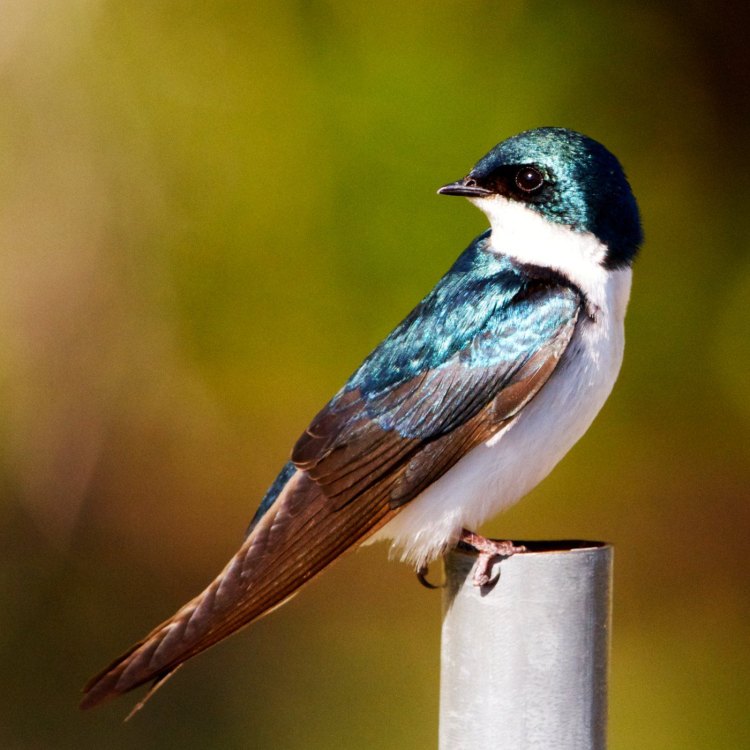
Barn Swallow
- Adult Size: Small
- Average Lifespan: 4 years
- Reproduction: Sexual
- Reproductive Behavior: Monogamous
- Sound or Call: Sings a variety of warbling calls
- Migration Pattern: Long-distance migratory
- Social Groups: Colonial
- Behavior: Highly aerial, catching insects on the wing
- Threats: Loss of habitat, pesticide use, climate change
- Conservation Status: Least Concern
- Impact on Ecosystem: Controls insect populations
- Human Use: Nest protection, birdwatching
- Distinctive Features: Forked tail, long wings
- Interesting Facts: Migrates thousands of miles from breeding grounds to wintering grounds
- Predator: Birds of prey, cats
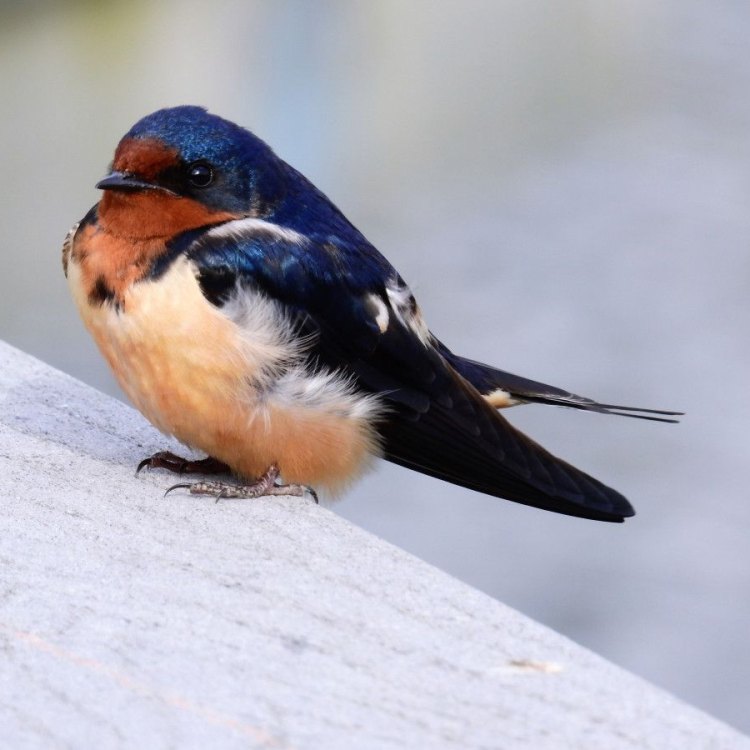
Hirundo rustica
The Fascinating World of the Barn Swallow
The bird world is a diverse and intriguing one, full of unique species with fascinating features and behaviors. One such species is the Barn Swallow. These small and agile birds possess a set of interesting characteristics that make them stand out among other species. From their long-distance migrations to their distinctive forked tails, the Barn Swallow is a bird worth getting to know PeaceOfAnimals.Com.Size and Reproduction
The Barn Swallow, also known as Hirundo rustica, is a small bird, measuring around 6 inches in length and weighing only 0.53 ounces. Despite their small size, these birds are excellent fliers and can reach speeds of up to 35 miles per hour. They have a slim build, with a long, forked tail and elongated wings. Their feathers are a combination of dark and light shades, often with a tinge of rusty color on their undersides.When it comes to reproduction, Barn Swallows are strictly monogamous. Males and females form pairs and remain together for the duration of the breeding season. They build their nests in sheltered areas, such as barns, sheds, or under bridges. The nests are made from a combination of mud and grass, with a cup-shaped structure that is lined with feathers Banjo Catfish. Interestingly, it is the male's responsibility to gather the materials for nest building, while the female makes the actual nest.
Lifespan and Behavior
On average, Barn Swallows have a lifespan of 4 years. However, there have been some records of individuals living up to 11 years. These birds are highly social and form colonies or flocks in the breeding season. They are also highly aerial, meaning they spend most of their time in flight. This behavior is due to their diet, as they catch insects while flying. It is not uncommon to see a Barn Swallow swoop and turn in the air, catching insects with impressive precision.Barn Swallows are known for their beautiful and varied warbling calls. They have a repertoire of sounds, including chirps, trills, and gurgles, which they use to communicate with their colony members or to attract a mate. These calls can also be used to defend their territory against potential threats.
Migration and Habitat
One of the most remarkable characteristics of the Barn Swallow is its migration pattern. These birds are long-distance migratory, traveling thousands of miles from their breeding grounds in the Northern Hemisphere to their wintering grounds in the Southern Hemisphere. They undertake this journey twice a year, making it one of the longest known migrations of any bird species. The Barn Swallow's breeding range includes North America, Europe, and Asia, while their wintering range includes Central and South America, Africa, and Australia.Barn Swallows prefer to live in open habitats, such as farmlands, meadows, and open woodlands. Their name gives a clue as to one of their preferred nesting sites - barns. However, they can also be found nesting in other man-made structures, such as bridges and buildings. Loss of habitat is a significant threat to the Barn Swallow, as agricultural practices continue to destroy their natural nesting sites. They are also at risk due to the use of pesticides and the effects of climate change, which can impact their food sources and nesting sites.
Conservation and Impact on Ecosystem
Thankfully, despite these threats, the Barn Swallow is not currently listed as an endangered species. In fact, its conservation status is listed as "Least Concern," according to the International Union for Conservation of Nature (IUCN). This status is a result of their large global population and wide distribution range.Besides their aesthetic and ecological value, Barn Swallows also play a crucial role in maintaining the balance of their ecosystems. Their diet consists mainly of insects, which they catch on the wing. By controlling insect populations, Barn Swallows contribute to keeping these populations in check and preventing any negative impact on crops and other plant life.
Human Use and Interesting Facts
The relationship between humans and Barn Swallows goes beyond their ecological role. In many cultures, these birds hold a special significance and are seen as symbols of good luck, hope, and fertility. However, there is also a less positive impact of human use on this species. The demand for bird feathers in the 19th and early 20th centuries for fashionable hats and clothes led to a decline in the Barn Swallow population. Since then, their feathers have been protected, and the use of nest materials to make feather beds has also been outlawed.A fun fact about Barn Swallows is that they have been observed flying in large groups of thousands of individuals. These gatherings are called swarms and are thought to be a way for Barn Swallows to communicate and share information about food sources and potential threats.
Predators and Threats
Despite their impressive aerial abilities, Barn Swallows are not immune to predators. Birds of prey, such as hawks and falcons, are their main predators, as they prey on Barn Swallows during their long migrations. Cats are another threat, as they can catch and harm Barn Swallows while they are on the ground.Human-made threats, as mentioned earlier, are also a significant concern for this species. With the loss of habitat and the use of pesticides impacting their food sources, Barn Swallows face a challenging future. It is essential to protect their natural habitats and promote the use of sustainable agricultural practices to ensure their continued survival.
In Conclusion
The Barn Swallow is a truly remarkable bird, with its distinct features, fascinating behaviors, and impressive abilities. As their populations continue to face threats, it is crucial to recognize the vital role they play in maintaining the balance of their ecosystems. Through conservation efforts and responsible human use, we can ensure that these graceful birds continue to grace us with their presence and inspire awe for generations to come.
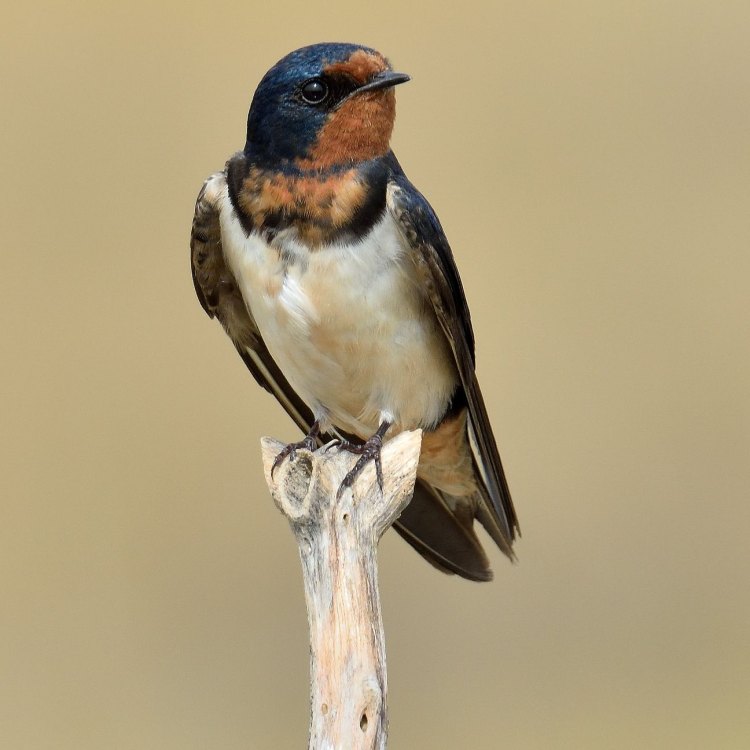
The Graceful Barn Swallow: A Tiny Bird with Mighty Flying Abilities
Disclaimer: The content provided is for informational purposes only. We cannot guarantee the accuracy of the information on this page 100%. All information provided here may change without prior notice.





